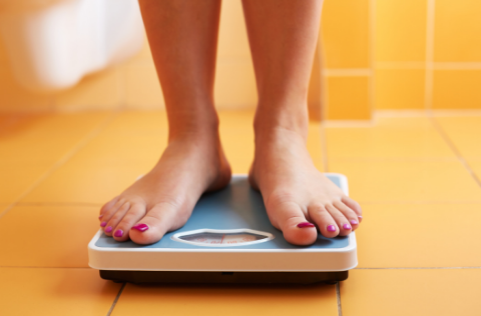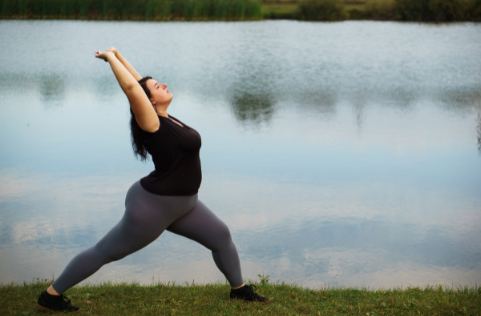The subject of weight often brings up a lot of feelings, opinions, fears and anxiety. Our thin-obsessed, fat-phobic, weight normative culture places so much pressure on people to micromanage their body size through, oftentimes, extreme and unsustainable means. More often than not, this fixation on being a certain weight or having a certain body type stems from the desire to be accepted by others, fears of inadequacy, or concerns over how others may perceive us.
What is set point theory?

Set point theory, which is really more fact than theory, is how we explain body diversity, and why so many (95%) people regain weight within 3-5 years after an initially “successful” dieting attempt. The small minority of individuals who maintain weight loss are not only statistical unicorns, but usually make it their life’s work to keep the weight off- often becoming fitness instructors, trainers or nutrition “coaches,” or dedicating much of their time to managing their food and exercise intake.
Essentially, each one of us has a biological blueprint, and with that, a set point, the range (5-20 pounds) where our bodies thrive and not fight against any subtle change. Many people have a hard time accepting this, as our society wants us to believe that everyone is capable of achieving and maintaining a thin body. Not so.
Why are our set points different?
Body diversity exists because of our unique, diverse genetic blueprints and physiology. The BMI scale attempts to categorize people based on weight and height and label them as healthy or unhealthy, however, we know this tool is flawed, outdated and not an indicator of health.
Many folks who fall into the “healthy” category may actually be at a weight that is not where their body wants to be due to perhaps dieting, restriction, or over-exercise. Similarly, those in larger bodies who are automatically labeled “unhealthy” frequently have perfectly normal bloodwork and other markers of health.
Health can be achieved at any size (more on health at every size here), but attempting to abide by rigid rules in order to influence the number on the scale will never be conducive to that goal.
What happens when you attempt to change your set point range?

When you push your body out of its natural set-point, regardless of size, the body kicks in survival mechanisms. It will slow metabolism to conserve energy, reduce fullness signals, and increase the drive to eat. The body interprets dieting, AKA any attempt to shrink or control body size, as starvation.
Hence, our caveman brains signal that there is scarcity- leading to activation of these sophisticated mechanisms to bring the body back to the natural set point. And with each attempt at weight loss- the set point may actually increase as a way to protect the body in case the threat occurs again.
Now, we know how easy it can be to get caught in a cycle of dieting. The diet industry always seems to promise that you can change your set-point and "lose the weight for good." However, if you are as fed up with diet culture as we are, we encourage you to start our Jumpstart to Intuitive Eating Course to ditch the diets for good!
How to know if you are in your set point weight range

When we are at our set point, barring we do not have a chronic illness or underlying medical issues, our hormones are balanced, we get regular periods (if we are female and not on certain hormonal contraceptives), our labs are stable, our hair and nails are strong, our hunger and fullness cues are present, and it is effortless to maintain our weight.
This means we don’t have to obsessively count calories, compulsively exercise, restrict certain foods, attempt the latest diet, or constantly overthink or question food choices. We are able to appropriately eat in amounts that are adequate, occasionally past comfortable fullness, without compensating with exercise.
It is important to point out that being at a healthy weight for *YOU* does not necessarily mean “healthy” according to the BMI scale. In one study, it was shown that 38% of patients who were restricting calories lost their periods while they were still at a “normal BMI”, as many exhibited symptoms of starvation (such as loss of menstruation) without being clinically underweight (from Dr. Jennifer Guadiani’s book Sick Enough).
There is no special equation or test to determine if you are at your natural set point or what it is. There’s no chart that shows your healthy set point based on your height, age, gender, etc. The way you can determine your set point is by letting go of control over food and your body, and by instead tuning into your body’s natural cues for what, when, and how much to eat.
Instead of pushing yourself to exercise a certain way, intensity, or duration, you may need to take a step back from exercise or engage in gentler forms of movement.
trust that your body will know where to land

One of the fears we hear so often from our clients is that if they start to eat intuitively, meaning they let go of their rules, counting, restricting and rigidity, that their weight will shoot up and never stop. We first want to acknowledge that fear.
This fear is legitimate and valid, as we live in a society that is obsessed with leanness and is incredibly fat phobic. People in larger bodies are shamed for their size and receive stigma from many angles. This is why the weight-inclusive approach is not only health-enhancing, but is also a social justice movement.
However, we also want to encourage you to trust that your body will know where to land. It will find its happy place and doesn’t need you to micromanage it. We know how difficult it can be to trust your body, especially after years of dieting. Learn how to gain that trust back in the Jumpstart Intuitive Eating Course.
how do i get started?

Unlearning the idea that your body should look a certain way, letting go of the desire to control, and instead learning to accept that your body will rest at a certain weight without your influence may be the most health-promoting choice you can make.
Of course, letting go of control, ditching the scale, and “trusting the process” is scary and uncertain. But the only way to a more fulfilling, authentic life free from dieting, weight cycling and food fear is to acknowledge that your body has your back, and is perfectly capable of managing on its own.
This process requires time, patience and lots of self-compassion. In a world where the pressure to be thin and diet noise is prolific, this may very well need to be an active, daily, intentional choice to opt-out and not participate in dieting or body manipulation. You may feel like you are swimming upstream, but it gets easier!
begin working with a virtual nutritionist in massachusetts
Working with a virtual nutritionist can help make this task a little easier. To help you feel supported and informed, virtual nutritionists can provide one-on-one guidance to ensure you reach your health goals.
If you're interested in working with us:
- Book an Appointment
- Learn More About Us
- Find the Right Resources for You!
[…] and strict food rules, getting pregnant seemed out of reach. Thanks to toying with my body’s natural set point for years — and a long stint on birth control — my menstrual cycle was anything but regular. […]